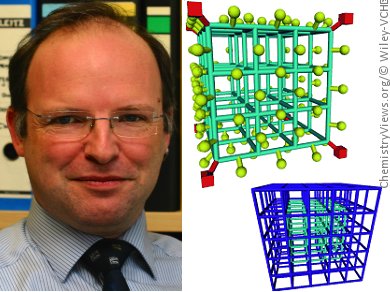The number of reported metal−organic frameworks (MOFs) has been increasing steadily over the years, with more than 20,000 described in the last decade. MOFs are network structures that are formed when inorganic and organic building blocks are combined and have applications such as energy storage and catalysis. In fact, with so many MOFs being reported, they are becoming so common that a precise definition is required.
Roland A. Fischer, Ruhr-Universität Bochum, Germany, discusses the IUPAC definition of a MOF: “A metal–organic framework compound is a coordination compound with organic ligands and potential cavities.” This does not include permanent porosity, but rather “potential cavities” as flexible structures are unique to these materials.
The estabishment of the term MOF which had emerged in the early 1990s, is closely connected with Omar M. Yaghi and Michael O’Keeffe in late 1999 and demands (or demanded) originality and vision. Therefore, Fischer outlines why care is needed when identifying compounds as MOFs in individual cases.
- Metal−Organic Frameworks: The New Jack of All Trades for (Inorganic) Chemists,
Roland A. Fischer,
Angew. Chem. Int. Ed. 2014.
DOI: 10.1002/anie.201402580 - Terminology of metal–organic frameworks and coordination polymers (IUPAC Recommendations 2013),
Stuart R. Batten, Neil R. Champness, Xiao-Ming Chen, Javier Garcia-Martinez, Susumu Kitagawa, Lars Öhrström, Michael O’Keeffe, Myunghyun Paik Suh, Jan Reedijk,
Pure Appl. Chem. 2013, 85, 1715–1724.
DOI: 10.1351/PAC-REC-12-11-20
Also of interest:
- Terminology for Coordination Polymers and MOFs,
Lars Öhrström (IUPAC),
ChemViews Mag. 2013.
DOI: 10.1002/chemv.201300008





We are pleased to announce that some of the question raised by Prof. Fischer in this article will be addressed in a recently approved new IUPAC project entitled: “Terminology guidelines and database issues for topology representations in coordination networks, metal-organic frameworks and other crystalline materials”.
Comments and suggestions on this project are, as per usual, welcome to the task group chair at [email protected] who is also on twitter as @larsohrstrom.